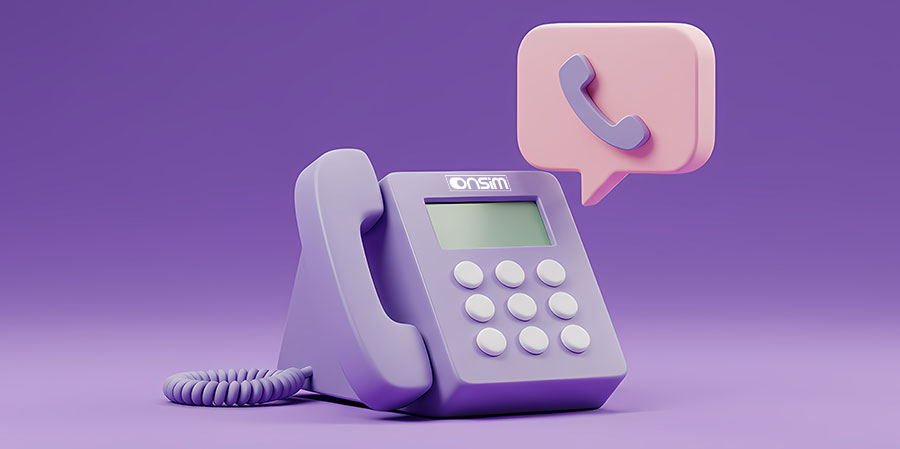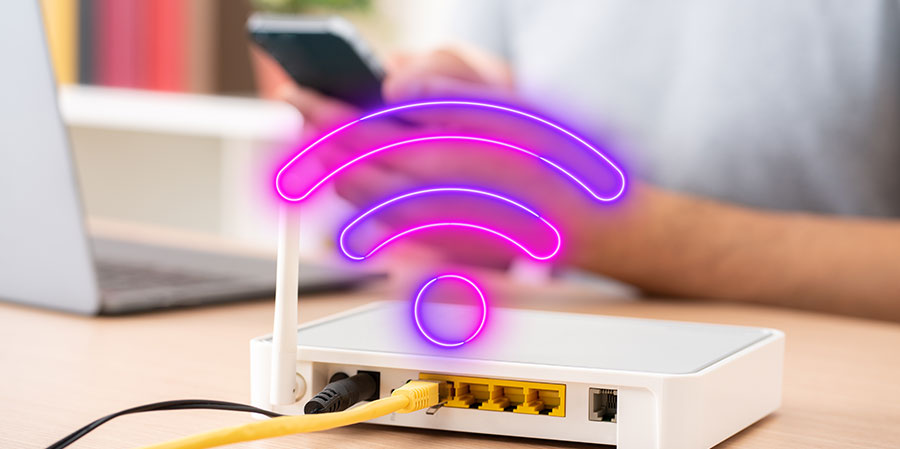· Luke Faragher · Guides · 5 min read
Virtual Landline - The Ultimate Guide for UK Businesses 2025
Explore virtual landline options in the UK - call forwarding, VoIP apps, and Landline SIMs. Find the right solution for your business needs.

What is a Virtual Landline?
A virtual landline lets your business use a landline number to make and receive calls without needing a physical or ‘fixed line’ phone. Instead, calls are routed to your existing mobile, a VoIP app or dedicated landline SIM. You get all the credibility of a traditional landline for your business—without the time, hassle, cost or inflexibility of fixed-line installation.
Virtual landline services prioritise simplicity and low cost above all else. A potential drawback is that they can lack features, so it’s best to choose a solution where you can see a clear upgrade path when your business starts to take off and you need to add additional team members or more advanced features. Porting your new landline number between providers in the UK can be very time-consuming.
Why do I need a Virtual Landline in 2025?
- Professional Image: Display a local or national number to build trust in your business
- Flexibility: Answer calls anywhere
- Work-life Balance: Separate your personal and business numbers and protect your personal contact details
- Improved Efficiency: Handle inbound customer calls efficiently and make following up easier
- Cost Savings: No expensive hardware or line rental required
- Scalability: Add or remove numbers and team mates as your business grows
- Advanced Features: Voicemail-to-email, call forwarding, hunt groups, and more
Who Can Benefit from a Virtual Landline?
- Startups & Small Businesses: Establish a presence without high costs
- Freelancers & Consultants: Keep work and personal calls separate
- Remote & Hybrid Teams: Stay connected wherever you work
- Charities & Nonprofits: Offer a trusted number for supporters and stakeholders
What area codes are available for Virtual Landline numbers?
Virtual landlines offer great flexibility—you can get new numbers in virtually any UK area code. However, some geographic codes are designated as “conservation areas” by Ofcom, meaning their supply is limited and they may be harder to obtain.
You can also choose non-geographic numbers, like those starting with 03 or 08.
- 0800 (freephone) numbers are free for callers but cost more for you.
- Most people now have unlimited call plans, so calling cost differences are rarely a concern.
Can I move a landline number I already own from an existing provider like BT?
If you already have a UK landline number, you can usually port it to a virtual system—unlocking its benefits and saving money.
What types of virtual landline service are available in the UK and what are the core differences?
Call Forwarding Only (Basic Virtual Landline)
How it works:
A landline number is provided and hosted by the provider. All calls to that number are automatically forwarded to your mobile number.
Best for:
Individuals and micro businesses wanting a professional number but only need basic service with inbound calls.
Pros:
- Very easy and quick to set up
- No need to install any apps, SIMs or hardware
- Low cost
- Quick and simple
Cons:
- Limited features
- No outbound calling using the virtual number
- Returning missed calls shows your personal number
- Risk of contacts saving your mobile number instead
Cost:
- Setup fee: £0 to £10
- Monthly cost: £1 to £10
- Call forwarding costs: ~5p to 10p/min when forwarding to mobile
Watch for “free” numbers with expensive per-minute rates—250 mins could cost £25. Look for inclusive or unlimited minutes.
VoIP App-Based Virtual Landline
How it works:
You receive a landline number and access it via a VoIP app on your smartphone, tablet, or computer. Some services allow two-way calling.
Best for:
Businesses needing full two-way calling and more control.
Pros:
- Make outbound calls showing your landline number
- Advanced features like call recording, voicemail, conference calling
- Works with existing devices
- Can support multiple users
Cons:
- Requires excellent, stable internet
- App and OS updates can cause issues
- Apps can be buggy or hide features behind paywalls
- Can drain your battery
- Smartphone required
- Cost of calling can be high
Cost:
- Setup fee: £0 to £20
- Monthly cost: £10 to £20 per user/number
- Call rates: Bundles usually included; outside ~1p to 5p/min
Landline SIM (e.g. ONSIM)
How it works:
A SIM card (or eSIM) gives you a landline number directly on your mobile. Outgoing calls show your landline caller ID, and you receive calls directly.
Best for:
Businesses and individuals who want mobile flexibility with landline credibility.
Pros:
- No apps or internet required
- Use native phone dialer
- Instant eSIM activation
- Combine mobile/landline for savings
- More features and reporting
- Better support than big networks
- More cost-effective international & roaming
Cons:
- Tied to mobile network coverage
- May need to switch network or phone
Cost:
- Setup: £0 (£1.50 for physical SIM postage)
- Monthly: £10
- Included: Unlimited UK calls & SMS, optional data bundles
Quick Comparison
| Service Type | Outbound Calls | Features | Best For |
|---|---|---|---|
| Call Forwarding Only | ❌ No | Basic call forwarding | Solopreneurs, simple setups |
| VoIP App-Based | ✅ Yes | Voicemail, recording, caller ID | Remote teams, freelancers |
| Landline SIM (ONSIM) | ✅ Yes | Full phone system features | Mobile professionals, on-the-go |
Key Features to Look For
| Feature | Benefit |
|---|---|
| Local & National Numbers | Build trust with customers in specific areas |
| Call Forwarding | Direct calls to your mobile or any device |
| Voicemail to Email | Never miss a message—get recordings straight to your inbox |
| Call Recording | Track conversations for training and compliance |
| IVR (Auto Attendant) | Route calls with menu options |
| Time of Day Routing | Send calls to different destinations based on time |
| Outbound Calling | Show your virtual number when calling out |
In summary:
- For simplicity, speed and lowest cost: choose Call Forwarding Only.
- For two-way calling (non-critical use): go with a VoIP App-Based solution.
- For true mobility with a landline number: the Landline SIM option is ideal.
ONSIM Insights into Virtual Landlines in the UK
ONSIM offers all three types—Call Forwarding (Virtual Landline Divert), VoIP App-Based, and Landline SIM—but we typically recommend Option 1 or Option 3.
Why?
- We’ve seen many customers switch from app-based providers due to reliability and call quality issues.
- App-based services are pushed for high profit margins (95%+), not customer benefit.
- Landline SIMs, while less profitable, offer better reliability, fewer issues, and lower churn.
In short:
- For simplicity and cost-effectiveness, choose Virtual Landline Divert.
- For full mobility and professionalism, choose a Landline SIM.
Food for thought: The best option for your business might not be the most profitable one for the provider—so it won’t always be the one they push.
How can I get a Virtual Landline Today?
Ready to experience the freedom and professionalism of a virtual landline?
👉 Sign up now or Contact us if you have any questions.



